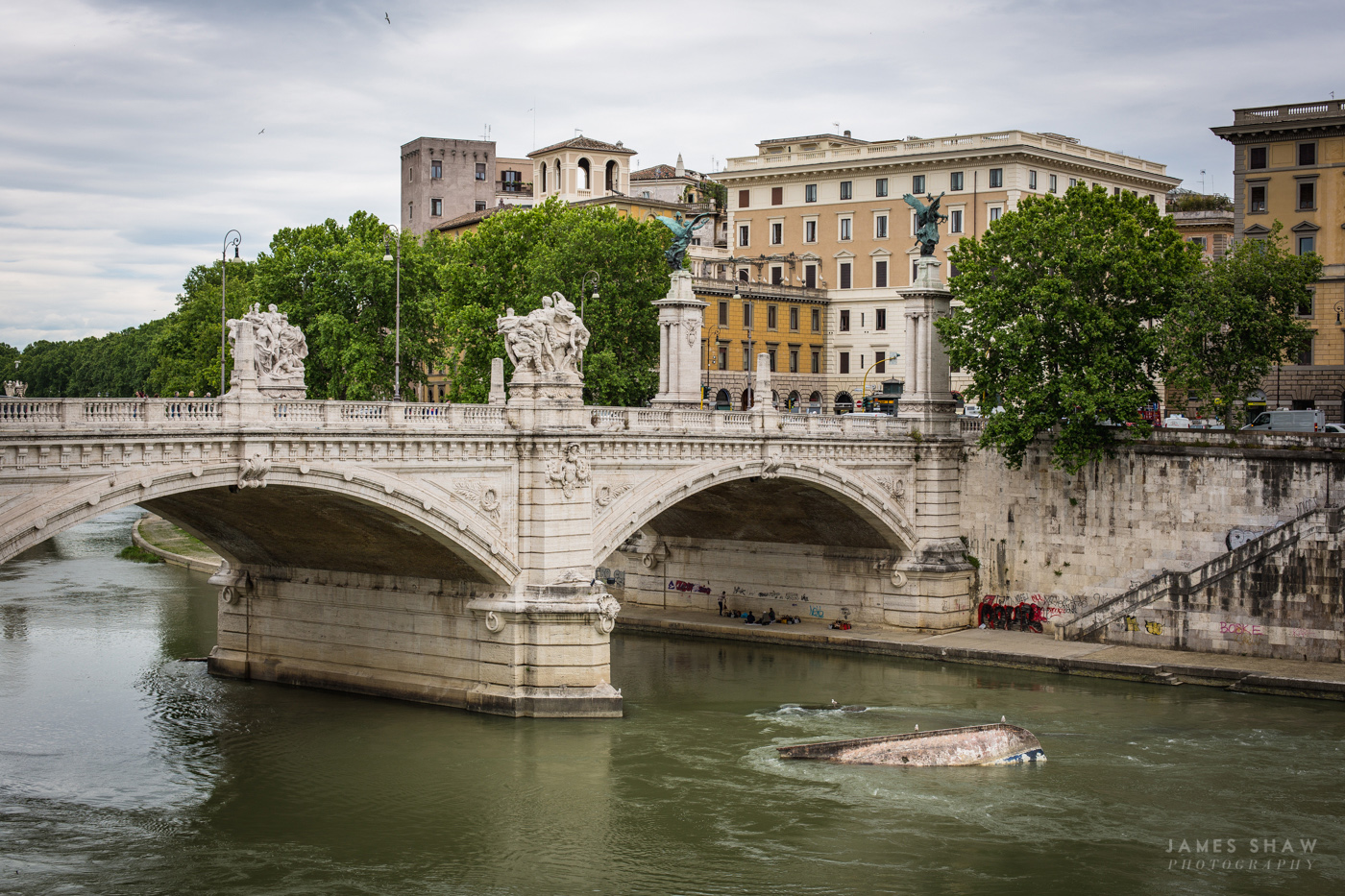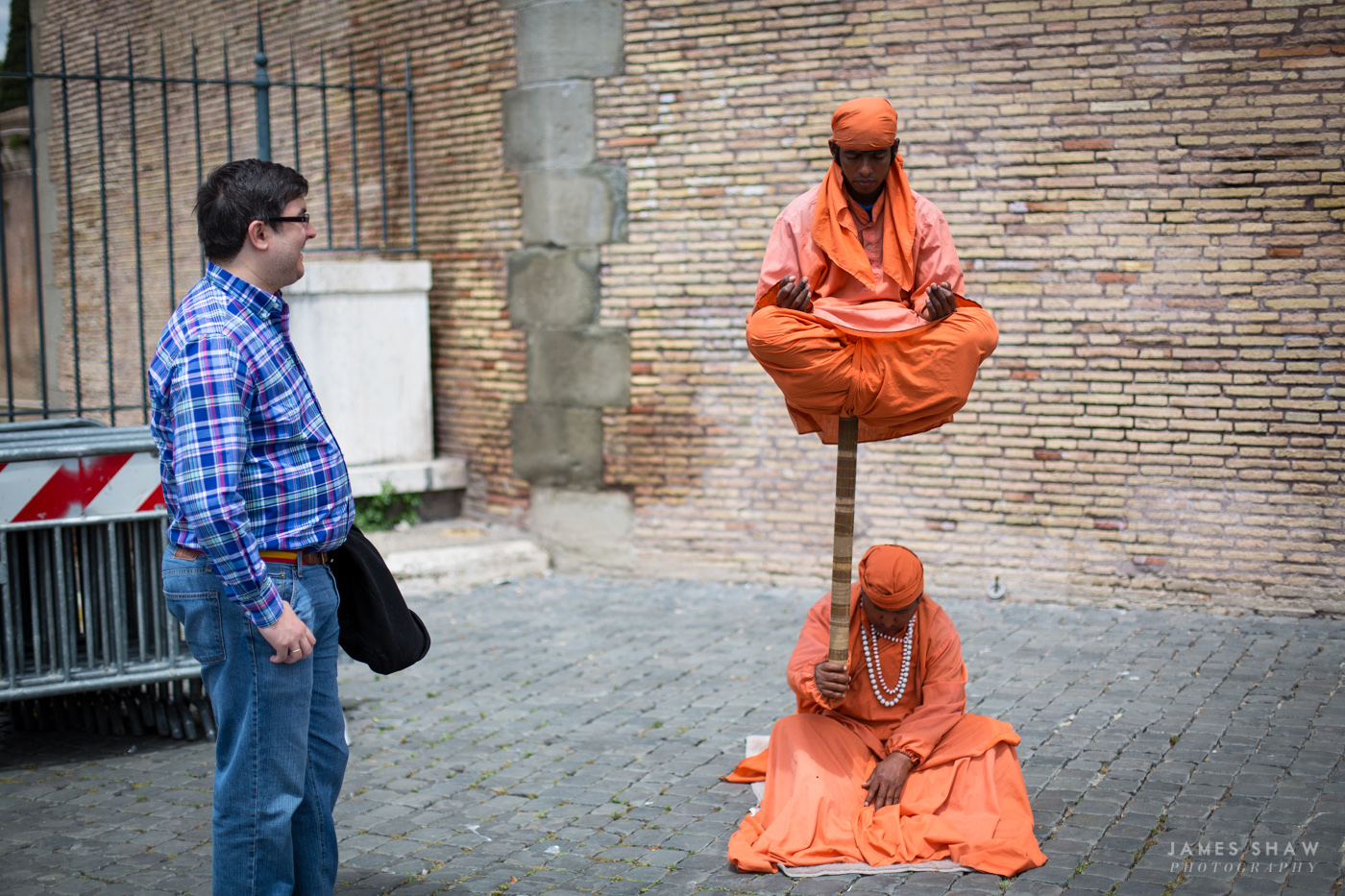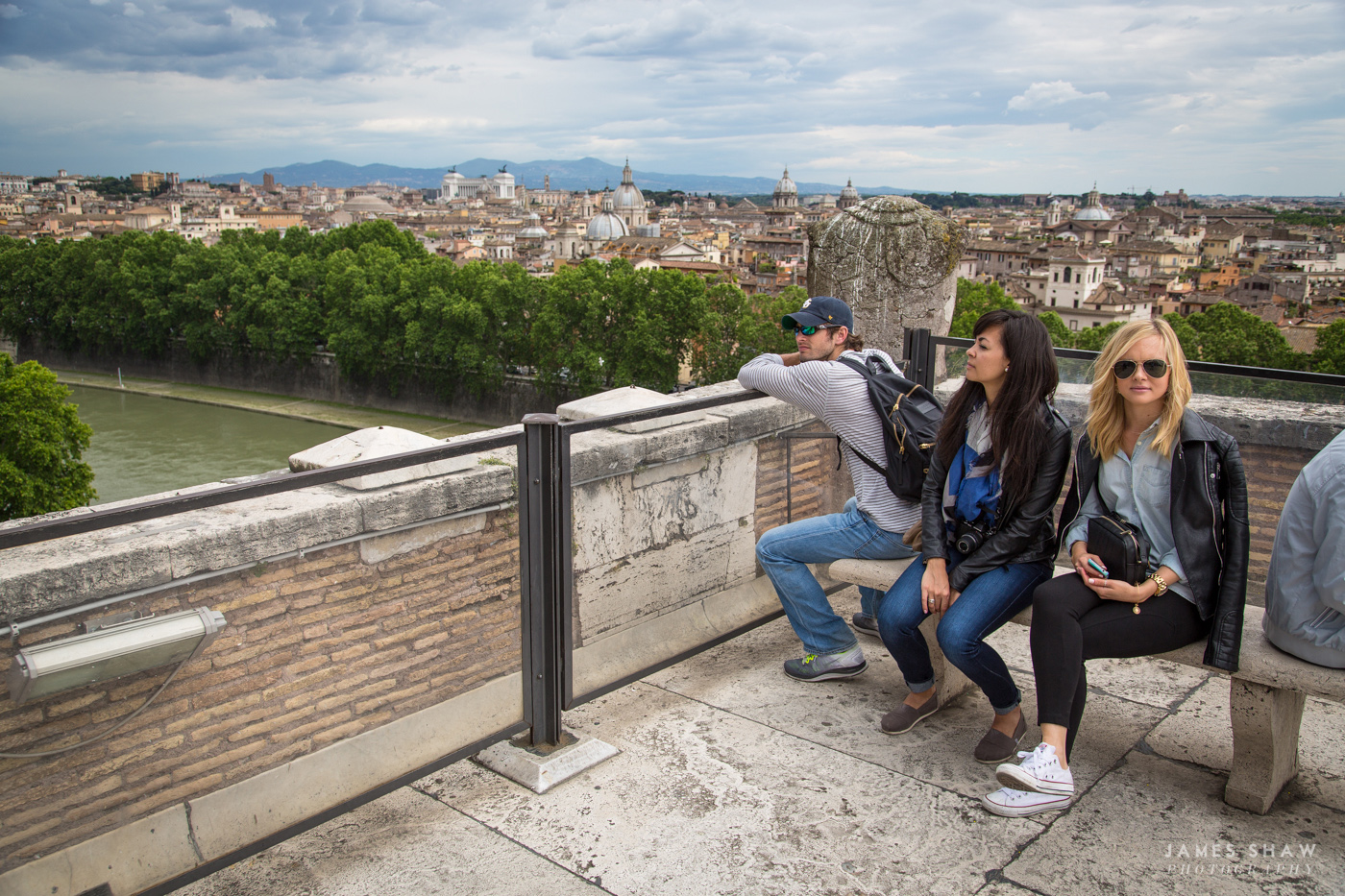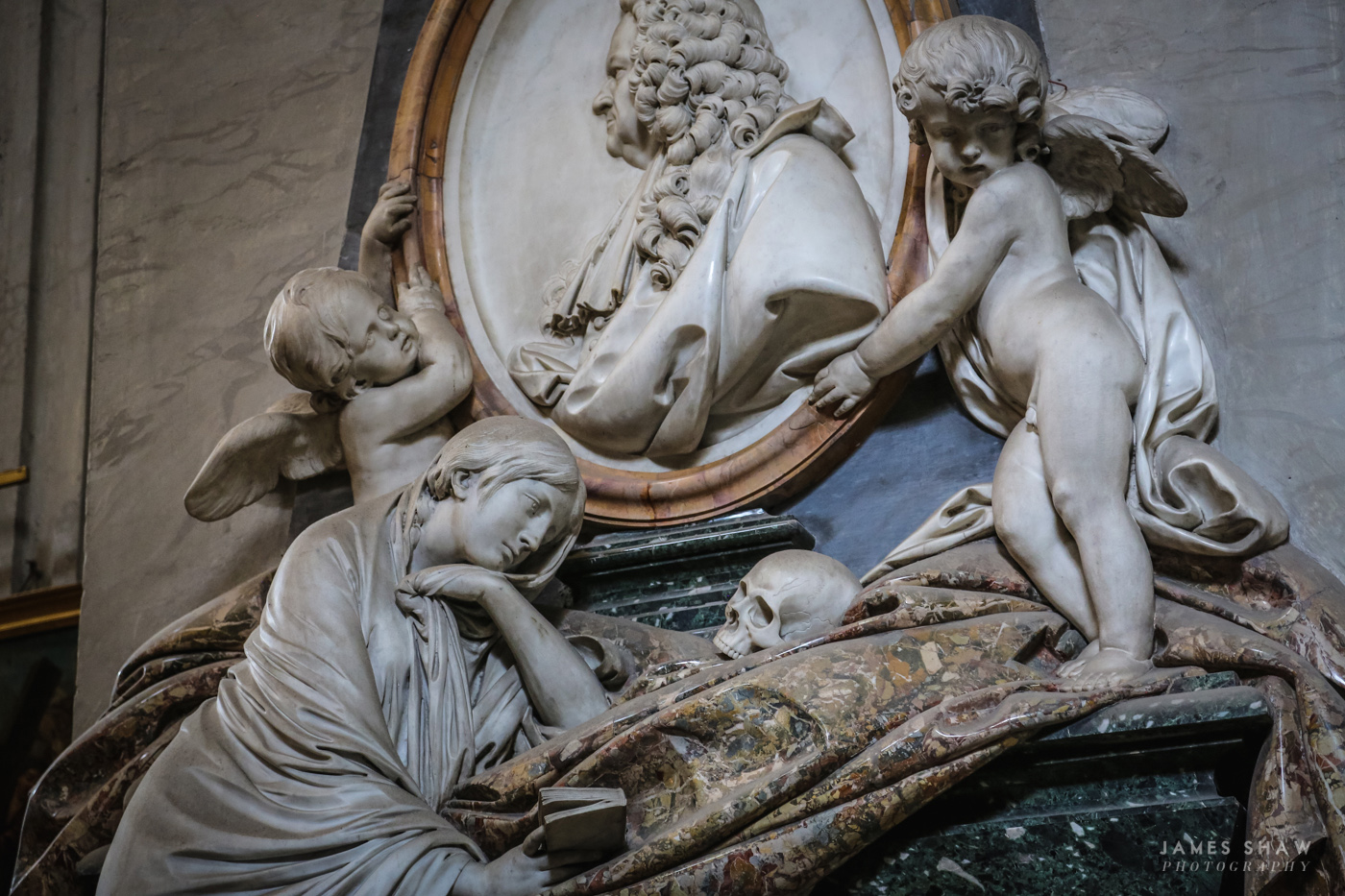Rome...what a city. If France is known for it's romance and sexiness and cheese, Italy is its crazy cousin- a little less refined, a little more crazy, and a whole lot of fun. It's civilized, but also exotic and unpredictable, which adds up to maybe the richest culture in Europe. The stereotypes are true. The Italians are a crazy emotional bunch. You'll see two people arguing in the streets with the most violent hand gestures you've ever seen, only to find out they're just discussing the weather. It's funny and unnerving at the same time. I can't explain it, but these emotional and temperamental people can also be the most charming people in the world. If you get in their good graces I'm convinced they would take a bullet for you.
I have to be honest, when I first visited 8 years ago it wasn't my favorite city. Looking back, there were a lot of conditions that led to my hasty conclusion. It might have been how rude the people were. It might have been the amount of trash and graffiti all over everything. It might have been that time I saw a grown man punch and break the jaw of an 8 year old child. (That is no joke...) Or it might have been the 100+ degree weather, with no relief anywhere in sight. I know that sounds like a petty spoiled American who is used to controlling his environment down to the degree, but I almost had a full blown panic attack one day because I could not get cooled off...I thought I was going crazy. Needless to say, nothing about the place, sans the ancient ruins, left me wanting more. That being said, I was extremely excited to get back and give it another shot.
Turns out a second chance was all I needed. Our experience in Rome could not have been better. The weather was perfect. Everything was cleaner. The people were amazing...almost too kind, to the point where I constantly thought we were getting scammed. The city had a new appeal to me- I almost couldn't believe this was the same place. Everything, I mean everything, was perfect. Our apartment, every meal we ate, every person we encountered...everything was top notch. It was one of those rare travel moments where everything seemed too good to be true, which as it turns out, usually is. It wasn't.
At one point, when we were on our way to our last meal, our cab driver started driving in circles, showing us and giving us the history of all of his favorite historic sights. While he was extremely nice and enthusiastic, and I really appreciated the gesture, I couldn't help but think he was just running up our fare. He finally pulled up to the restaurant and demanded that we get out of the cab without paying him! He literally refused to let us pay for our cab ride. His hospitality perfectly summed up our experience in Rome.
Now, having said all that Rome (and Italy) is a crazy place, full of pick pockets, scam artists, and highly unstable people. In fact, there was an entire chapter in our guidebook dedicated to such people. It can be an extremely tricky place, but like everywhere, if you're careful and use common sense, you'll be fine. And if you are genuinely nice and interested, you might even get a free cab ride.
[And just a tip, if you find yourself heading to Rome anytime soon, do yourself a favor and get the Roma Pass. It covers all your transportation for 3 days, lets you skip the line anywhere, and gets you in your first two sights for free...all for €34. It is worth it's weight in gold...I would have paid 3 times that much for the ability to skip the lines. It saved us hours. Get one.]
The view from our apartment balcony.

Ancient fan spectator graffiti.
The Colosseum, or Cathedral of Death, was built as a grand political gesture for the people of Rome. After the evil reign of that fiddler playing fool Nero, emperor Vespasian knew he had to do something grand to get back in the good graces of the Roman public. So, the Colosseum was planned and built in just 9 years, right in the middle of what used to be Nero's private lake. Old Vespasian croaked before it was completed, but his son Titus opened it, issuing in a new era of Roman domination. Holding anywhere from 50,000 to 80,000 people at a time, the Roman public was treated to a free entrance, free food, and of course, free carnage. You know what they say, give them bread and circuses!
One thing is for sure, the Romans loved their carnage. It is estimated that over 700,000 people and one million beasts were brutally murdered in some form or fashion here. Some exotic species were literally hunted to the point of extinction in this place. It must have been brutal.
That being said, if I had a time machine and could go back to any period in time, I'd love to catch some games at the Colosseum. Not that I'd necessarily love seeing people being eaten alive, or seeing animals being brutally tortured, but I think in terms of historical significance there is no better time or place. Plus I could get some free bread.
A painting by Giavanni Paolo Panini shows what the place looked like in 1747.
Apparently picnic lunches on 2,000 buildings are frowned upon.
The Pantheon was built at the height of the Roman power in 125 A.D. and is still the largest unsupported concrete dome in the world. It's a perfect sphere...of poured concrete! It requires all of my brain power to try and understand exactly how genius this building's construction actually was. Even seeing this perfect dome in all its glory hardly helps. It's just fascinating. At nearly 2,000 years old it's the best preserved building left over from Ancient Rome, and its largely untouched interior makes it somewhat possible to imagine what the rest of Rome once looked like. It's an architectural masterpiece and stills stands as one of the most important buildings in the world. Literally!
The Pantheon, meaning many gods, was actually stripped of its filthy Pagan status in 609 A.D. when it was converted into a Christian church, saving it from the destruction that most of Rome suffered. This also ensured that it would be the most continually used building in the world. Fun fact: most Christian holidays (including Christmas and Easter) were originally pagan!
Another fun fact: each of the Pantheon's 16 columns stand 40 feet tall and were carved from a single piece of Egyptian granite. But it appears that they were most likely a compromise to the original plans! If you care to watch a really interesting video on the brilliance and imperfections of the Pantheon, see below:
The current Fountain of Trevi only dates back to 1762, but its location lies at the end of the Aqua Virgo, an aqueduct built in the year 19 B.C. that carries water into Rome from 14 miles away. Pretty impressive. It's also said that the fountain collects more than €3,000 a day in coins, all of which is donated to charity. Way to go Rome!
Fun fact: the Aqua Virgo aqueduct (or Virgin Waters) was named so after the legend of a young virgin girl who led a bunch of starving and dehydrated Roman soldiers to a source of clean water, which was later used for the aqueduct that served Rome for more than 400 years.
Another crazy story: on the train from Venice to Rome, Riki looked outside at one of the stops and happened to randomly see our great friends Cody and Rebecca, seen above. We knew they were going to be in Italy and had planned to meet up in Florence, where our schedules overlapped by a few hours, but randomly running into them on the way to Rome was a real surprise. From the door of the train we planned a meet up in Rome for a debaucherous night out, and that's exactly what we did. What a small world!
There are two kinds of restaurants when traveling in Europe, and especially Italy. Those who want to rip you off because you're nothing but a tourist, and those who want to show off their food and serve you the best they have. This place was the latter. These places aren't interested in your money, they just want you enjoy their food and have a great time in their country. The owner himself served us, and was extremely enthused to recommend and bring us his favorite dishes (and wine). This pasta was hand rolled by a little old lady minutes before it was served to us. The bill was cheap and he gave us little dishes all along the way. These are the kinds of restaurants you need to find. (Just look for the ones that don't have an English menu...)
For some of the best views in Rome, head on up to the top of the Castel Sant'Angelo. Finished in 139 A.D., this place was a papal fortress, residence, jail, and tourist sight.
St. Peter's Basilica is deceivingly small on the outside, but once inside you instantly see how its the biggest and richest church in the world. It's straight up ridiculous.
...as are the Swiss Guard's uniforms.
Jesus' toes have been clean rubbed off.
Everyone knows that Rome was the greatest superpower and civilization that world has ever seen. But if you know your history, you know that Rome's fall was inevitable. Exactly why will be debated by historians for the rest of time. There were literally hundreds of factors that led to Rome's downfall, but most historians agree on the eight biggest factors. If this list doesn't scare you as an American, then you obviously you haven't been paying attention.
1. Invasions by Barbarian tribes.
2. Economic troubles and over-reliance on slave labor. Even as Rome was under attack from outside forces, it was also crumbling from within thanks to a severe financial crisis. Constant wars and overspending had significantly lightened imperial coffers, and oppressive taxation and inflation had widened the gap between rich and poor. In the hope of avoiding the taxman, many members of the wealthy classes had even fled to the countryside and set up independent fiefdoms.
3. The rise of the Eastern Empire. China, anyone??
4. Over expansion and military overspending. As more and more funds were funneled into the military upkeep of the empire, technological advancement slowed and Rome’s civil infrastructure fell into disrepair.
5. Government corruption and political instability. The political rot also extended to the Roman Senate, which failed to temper the excesses of the emperors due to its own widespread corruption and incompetence. As the situation worsened, civic pride waned and many Roman citizens lost trust in their leadership.
6. The arrival of the Huns and the migration of the Barbarian tribes.
7. Christianity and the loss of traditional values. While the spread of Christianity may have played a small role in curbing Roman civic virtue, most scholars now argue that its influence paled in comparison to military, economic and administrative factors.
8. Weakening of the Roman legions. For most of its history, Rome’s military was the envy of the ancient world. But during the decline, the makeup of the once mighty legions began to change. Unable to recruit enough soldiers from the Roman citizenry, emperors like Diocletian and Constantine began hiring foreign mercenaries to prop up their armies.
[That list was taken directly from this article on History.com. Check it out for much more info.]
Hot damn! If that list doesn't scare you then you need a reality check! Sorry to end on such a downer, but it's hard to ignore such a strong parallel.
Anyway, this would mark the end of Derek and Tiffany's European Adventure. We all went on our separate ways the next day. Needless to say I think they both had a good time despite the rushed schedule, and the next trip will be much more laid back. Until next time! Oh, and get to Rome!


































.jpg)





































.jpg)

.jpg)




















































.jpg)
















No comments:
Post a Comment